A baby goat’s last day (Part 4): ‘How is he to blame?’
by Katerina Lorenzatos Makris
The people who planned to eat Astio on Easter didn’t want to watch him die.
“Kostas” and “Stephania” (not their real names), my neighbors in our rural village on the Greek island of Kefalonia, both declared they can’t bear to kill animals themselves, and that they always stayed away when the butcher came to take the lives of the creatures they raised on their backyard farms.
I didn’t want to witness Astio’s death either. For several weeks since their births, I’d been watching the baby goat and his sister grow and play in a lovely meadow with their parents and aunts. This wouldn’t be easy.
But because I write frequently about farmed animal issues, and because the goat family had become part of my life, I felt compelled to be there.
The night before, sleeping was difficult. I awoke hours before the alarm clock rang at seven a.m. Kostas had said the earliest the butcher might arrive would be eight o’clock, and that he didn’t mind if I hung around his property until the butcher came, so that’s when I pulled up in my car, armed with a still camera, video camera, audio recorder, and my fully-charged laptop so that I could write while I waited.
My goal was not just to observe, but to document, with as much detail and accuracy as I could, the young animal’s slaughter.
A perfect day
Under a blue sky and gentle sunshine, birds chorused. Breezes from the nearby Ionian Sea moved through the fields of wildflowers and the silver-leafed olive trees as softly as sighs.
Here in Kefalonia and in many other parts of Greece, we had endured one of the harshest winters on record. That made the spring beauty of the day of Astio’s scheduled killing seem especially perfect—and especially surreal.
Could this really be a day for death? Not just for Astio; the same fate would befall hundreds more animals on the island, and millions more throughout Greece as the nation prepared for Greek Orthodox Easter feasting, just three days away that Sunday.
Sparkling weather like this would be perfect for Astio and his sister to scamper and chase each other around their little family’s grassy pasture. In my head, while watching him all winter, I’d named him with the Greek word for “joke,” because of his playfulness.
But their fun on this day would be cut short, as it would be for many other animals around the country, because diners wanted either baby goats like him or lambs for their holiday tables.
A nervous goat family
When I’m planning to travel, my dogs seem to sense it well before I pack a bag or give any other outward sign. They get clingy and anxious. How do they know?
And was it possible that Astio’s family somehow knew this would be a day of major change for them?
During the four hours while I waited for the butcher, they didn’t leave the front fence of their pasture, keeping a watchful eye on the road. After weeks of observing them, I had never seen that behavior before.
At around noon I was taking some last photos of Astio with his family, and that’s when a car drove up. The goats grew visibly tense, with ears pricked forward, tails erect, staccato snorts, and jerky movements—yet more behavior I hadn’t seen before from these animals who had always seemed accustomed to humans and cars.
A man and a boy aged about 10 or 12 got out of the car and knocked on Kosta’s door. Sure that this couldn’t be the butcher—since I couldn’t imagine anyone would take their child along for a slaughter—I kept photographing the goats.
They grew more anxious when they heard the man’s voice. And when he and the boy started walking in our direction, the male of the herd, Astio’s father, bolted and led his family to the far side of the pasture—as far away as they could get.
I remembered Kostas had said this butcher had come to slaughter goats for him many times before. Perhaps they recognized him and his voice from previous visits.
Dragged by the leg
While Kostas got a bucket of corn from his garage to lure the goats back, I introduced myself to the butcher, “Pavlos” (not his real name) who said it was OK if I took photos, video, and audio of his work for my articles about the baby goat’s slaughter.
At that moment I realized I had left my audio recorder in the car. After retrieving it, I turned back toward the pasture and saw Pavlos dragging Astio by one leg away from his family.
The butcher’s son skipped along excitedly next to his father.
The little goat bleated loudly as his mother, father, sister, and aunts watched.
I raised my camera to take a picture. Pavlos let go of Astio’s leg and picked him up into his arms. Holding the baby goat, he smiled for a photo.
The red knife
The rich valley soil of our village nourishes abundant crops of oranges and other fruit in almost every backyard. Over the weeks of winter, Kosta sometimes gave fruit or tender leaves and branches from his trees to Astio and his herd mates.
Now, on Astio’s last day, Pavlos set the baby goat down under one of those trees near Kosta’s house.
With my eyes focused on my cameras, alternating between the stills and the video, I couldn’t see the butcher’s son, but I heard his light footsteps on the pavement as he ran toward us. At one point I heard him laughing about something, but I didn’t know what.
The little goat continued bleating, in what sounded like increasingly anxious tones.
His owner, Kostas, hurried into his house and shut the door.
“Get me the knife please, my love,” the butcher told his son. [It is not uncommon for Greeks, most of whom dote on their children, to address them with this term and other endearments.]
“Which?” the boy asked. “The red one?”
Pavlos nodded. Then he looked down at the goat. “This poor little fellow. How is he to blame?”
I wanted to ask him what he meant, and about his feelings toward the animal, but just then his son returned with the knife.
It looked sharp, with a red handle, maybe something you’d find in a kitchen drawer—the blade about six inches long.
Bracing Astio in a sitting position between his legs, Pavlos quickly bent over and used the knife to pierce the baby goat’s throat. Blood poured out.
He sawed through Astio’s throat horizontally, with a cut that went about halfway toward the back of the animal’s neck.
Astio no longer vocalized. He blinked his eyes slowly. His legs flailed. A great deal of blood continued spilling out of the gaping wound.
Pavlos wiped the blade on the baby goat’s shoulder, leaving a red stain.
Still alive
The day before, Kostas had told me that even though he didn’t watch the slaughter of animals, he believed that it was “very quick—a matter of two or three seconds.” Stephania had agreed.
So I had thought that soon after the sawing through the throat and the tremendous loss of blood, Astio would be dead.
But he continued flailing his legs, switching his tail, twitching his ears, blinking his eyes, and struggling to breathe.
Pavlos placed one of his boots on Astio’s neck to hold him still. He caught one of the young goat’s hooves, pulled his leg upward, and sliced into the back of the leg with his knife.
Astio reacted by kicking violently with his other three legs, tossing his head, and struggling to rise.
“I don’t have a pump today,” the butcher said, “so I’ll do this with my mouth.” He sighed heavily, as if he were tired.
I didn’t recognize the Greek word for “pump” so I asked what it meant.
The butcher’s son said, “You know, like what you use to inflate tires.”
Pavlos put his lips over the leg wound.
“What are you doing?” I asked.
He replied, “This separates the skin from the tissue.”
As Pavlos blew in the air, Astio continued kicking his legs, hard. It appeared to me to be a reaction to pain.
The butcher stopped briefly to cough and wipe his lips with the back of his hand.
At least four minutes
According to my watch and to my observations, the killing of Astio took at least four minutes.
Judging from his continued, strong movements in direct reaction to actions by the butcher, it seemed to me that the young goat was still alive and perhaps conscious while the butcher blew air into his leg wound, separating his skin from his tissue.
It seemed to me that he was still alive and perhaps conscious while the butcher took told of his back hooves and bent his legs forward toward his body, apparently to better distribute the blown-in air.
It seemed to me that he was still alive and perhaps conscious while the butcher turned him on his back to skin him, beginning with a slice of the knife from one inner thigh and across his lower abdomen to the other.
At about the four minute mark, which came during the skinning process, Astio was no longer moving or obviously breathing.
I do not know whether or not he was still alive or if he was still conscious past that point.
Get fresh AIR! Please click on the SUBSCRIBE button above to receive an email alert when we post new articles on a wide variety of animal issues including the next article in this series:
A baby goat’s last day (Part 5): ‘Born to die’?
Previous articles in this series:
A baby goat’s last day (Part 1): An idyllic life
A baby goat’s last day (Part 2): Of sex, milk, and babies
A baby goat’s last day (Part 3): A date with the butcher
Katerina Lorenzatos Makris is a career journalist, author, and editor. Credits include hundreds of articles for regional wire services and for outlets such as National Geographic Traveler, The San Francisco Chronicle, Travelers’ Tales, NBC’s Petside.com, and Examiner.com (Animal Policy Examiner), a teleplay for CBS-TV, a short story for The Bark magazine, and 17 novels for Avon, E.P. Dutton, Simon and Schuster, and other major publishers.
Together with coauthor Shelley Frost, Katerina wrote a step-by-step guide for hands-on, in-the-trenches dog rescue, Your Adopted Dog: Everything You Need to Know About Rescuing and Caring for a Best Friend in Need (The Lyons Press).
Please respect copyright law. Sharing AIR links really helps! But copying more than a couple of paragraphs of content without permission is a no-no. If you’d like to use one of AIR’s articles or one of our photographs, kindly contact us at [airinfo AT yahoo DOT com].
Copyright © 2014 Animal Issues Reporter and AnimalIssuesReporter.com.
All rights reserved.
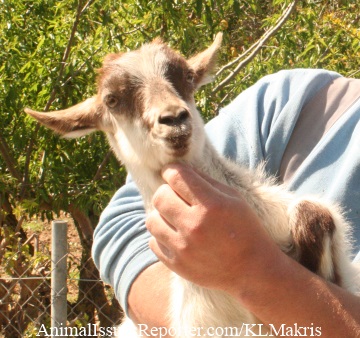
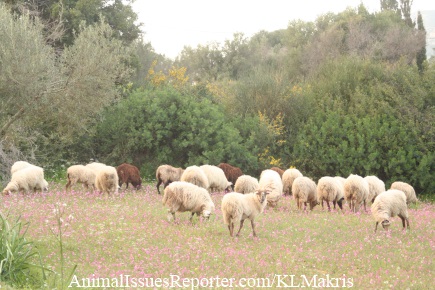
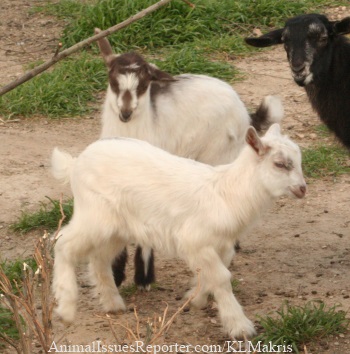
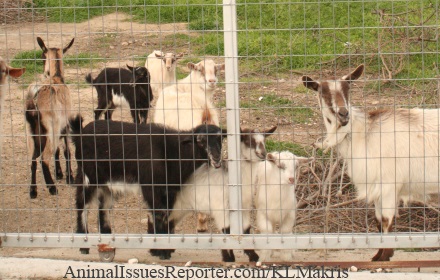
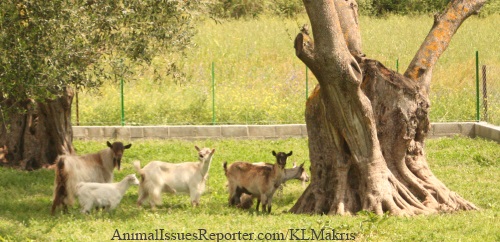
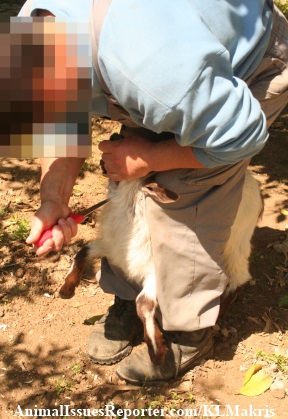

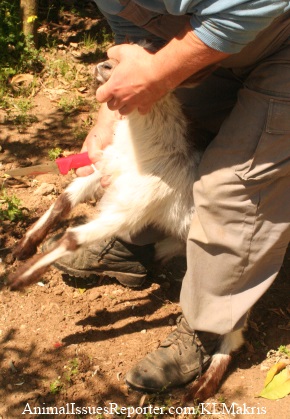
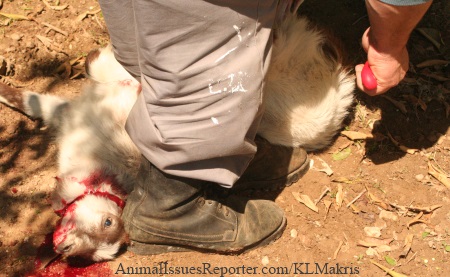
This is so fucking cruel and tragic that humans can inflict such pain on a baby goat. I find it inhumane and in no way a humane way to kill an animal. I’m so sad after reading this.
Natasha thanks so much for reading and for leaving the comment. I’m sorry to have made you sad. It has been difficult to research/write this series and I know that reading it is equally rough. My goal was to see for myself how “home” slaughter is done, what it’s like for the animals, and pass on the information. I hope it’s of use. Anyway thanks again for reading and taking the time to comment.